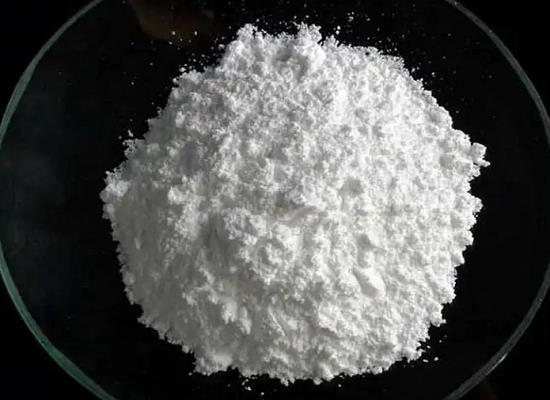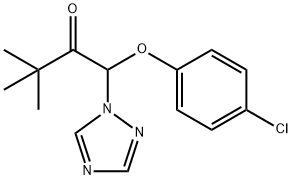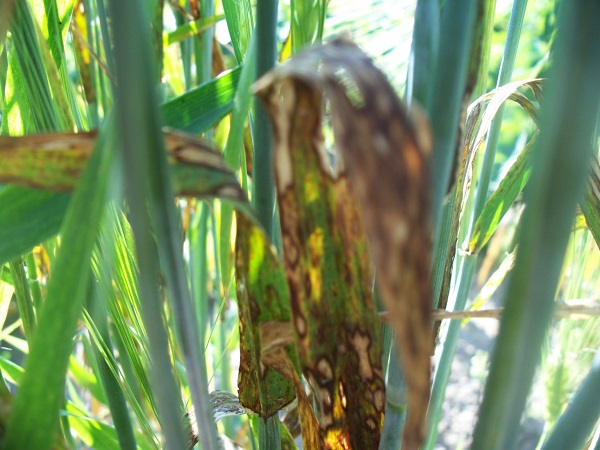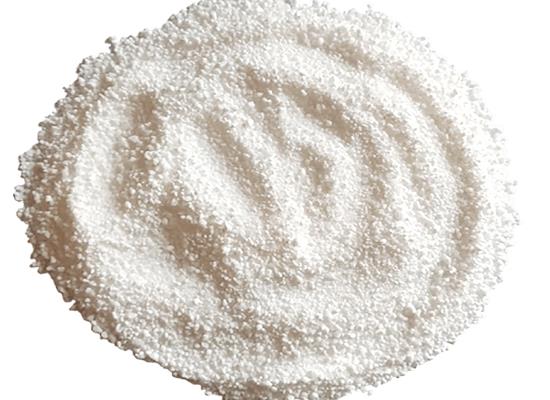Triadimefon: Balancing Agricultural Benefits with Health Hazards in Plant Growth Regulation
General Description
Triadimefon is a triazole fungicide commonly used in agriculture to control plant diseases. However, it also has unique plant growth regulatory properties that promote growth and development of plants by regulating hormonal signaling pathways, improving chlorophyll content, root system development, and stress resistance. Triadimefon has also been shown to increase tolerance to environmental stresses such as salt, drought, and hypothermia, as well as improve the weight, sucrose, and starch content of tubers. Additionally, it can induce carbon and nitrogen metabolism and root ultrastructural changes in soybean plants under drought stress. It is important to note, however, that triadimefon presents health hazards such as skin, eye, and respiratory tract irritations, skin sensitization, and moderate acute oral toxicity, highlighting the need for appropriate safety measures when handling this compound.

Figure 1. Triadimefon
Agricultural Applications
Versatility in Promoting Plant Growth
Triadimefon is a triazole compound that is commonly used as a fungicide to control plant diseases such as banded sclerotial disease, powdery mildew, and rust disease. However, triadimefon also has unique plant growth regulatory properties that make it a versatile tool for promoting the growth and development of plants. One way in which triadimefon promotes plant growth is by regulating hormonal signaling pathways. Specifically, it reduces the content of gibberellic acid and inhibits ethylene synthesis while improving cytokinin levels. This hormonal balance ultimately leads to improved chlorophyll content, enhanced root system development, and increased stress resistance, including resistance to water stress. Additionally, triadimefon has been shown to improve the tolerance of various plants to environmental stresses. For example, it increases the salt tolerance of Catharanthus roseus, the drought resistance of Helianthus annuus, and the tolerance to hypothermia in cucumber seedlings. Moreover, triadimefon has been found to increase the weight, sucrose, and starch content of Dioscorea rotundata Poir tubers under normal water conditions. Furthermore, recent studies have demonstrated that triadimefon can induce carbon and nitrogen metabolism and root ultrastructural changes in soybean plants under drought stress at the flowering stage. By fully utilizing the versatility of triadimefon, it is possible to reduce the emission of total pollutants in an agricultural setting while promoting plant growth and increasing resistance to environmental stressors. In conclusion, triadimefon's dual properties as a fungicide and plant growth regulator make it a valuable tool for promoting plant growth and development while reducing the use of other potentially harmful chemicals in agriculture. 1
Beneficial effects in overcoming drought stress
Triadimefon has demonstrated beneficial effects in overcoming drought stress in soybean plants at the fluorescence stage by regulating leaf photosynthesis and assimilate transport. When soybean plants experience drought stress, triadimefon application has been shown to alleviate the inhibitory effects of drought on photosynthesis, leading to increased RuBPCase activity. Drought stress typically increases soluble sugar contents while reducing starch content in leaves due to heightened activities of sucrose phosphate synthase, fructose-1,6-bisphosphatase, invertase, and amylolytic enzymes. This imbalance impedes carbon assimilate translocation to roots and reduces plant biomass. However, triadimefon treatment elevates starch content and limits sucrose degradation by enhancing sucrose synthase activity and suppressing the activities of SPS, FBP, INV, and amylolytic enzymes compared to drought alone. This regulation of carbohydrate balance helps mitigate the impacts of drought on soybean biomass, thereby improving the plant's overall resilience to drought stress. 1
Health Hazards
Triadimefon presents a range of health hazards that necessitate careful handling and management. Exposure to this compound may lead to symptoms such as skin, eye, and mucous membrane irritation. It poses both acute and chronic hazards, being capable of absorption through the skin. Furthermore, when subjected to decomposition, it releases toxic fumes including hydrogen chloride, hydrazines, amines, nitrogen oxides, and carbon monoxide, highlighting the potential risks associated with its use. Triadimefon is classified as an eye irritant and can cause skin sensitization, targeting blood and nerves. Additionally, it may result in skin, eye, and respiratory tract irritations. Notably, oral LD50 (rat) is 363 mg/kg, indicating moderate acute oral toxicity. Furthermore, it has been observed to induce hyperactivity followed by sedation in human poisoning cases. Given these health hazards, it is crucial to implement appropriate safety measures when working with Triadimefon to mitigate any potential adverse health effects. 2
Reference
1. Xu B, Zheng C, Sun T, et al. Beneficial effects of triadimefon in overcoming drought stress in soybean at fluorescence stage. J Plant Physiol. 2023;287:154015.
2. Triadimefon. National Center for Biotechnology Information (2024). PubChem Compound Summary for CID 39385.
Related articles And Qustion
Lastest Price from Triadimefon manufacturers

US $2.30/box2025-09-28
- CAS:
- 43121-43-3
- Min. Order:
- 1box
- Purity:
- 99%
- Supply Ability:
- 20tons

US $0.00/kg2025-09-23
- CAS:
- 43121-43-3
- Min. Order:
- 1kg
- Purity:
- 98%
- Supply Ability:
- 1000kgs



